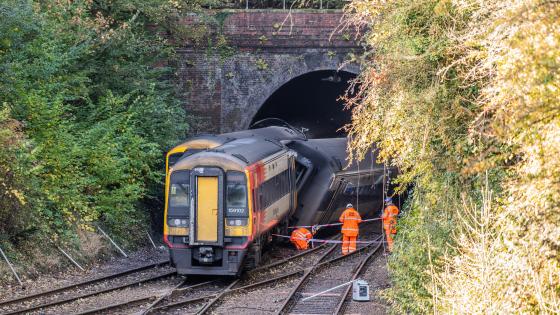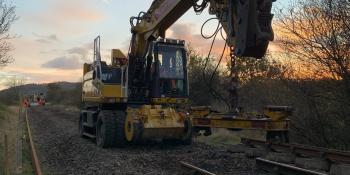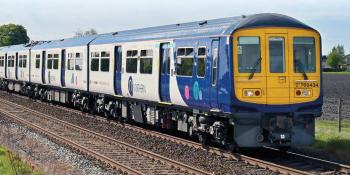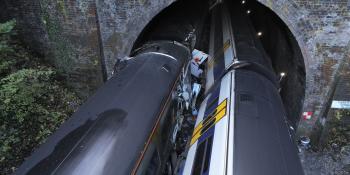
The Rail Accident Investigation Branch says poor railhead conditions causing low adhesion were ‘the most likely cause’ of a South Western Railway Class 159 failing to stop at a red signal and colliding with a GWR Class 158 at Fisherton Tunnel, Salisbury, on 31 October.
The driver of the South Western Railway Waterloo-Honiton train which collided with a Great Western Railway Portsmouth Harbour-Bristol service at Fisherton Tunnel applied brakes as the train approached the signal protecting Salisbury Tunnel Junction, according to initial evidence published by the Rail Accident Investigation Branch.
In an update published on 2 November, investigators confirmed that the passage of the 17.08 Portsmouth Harbour to Bristol Temple Meads was being protected by a red signal, but that the approaching SWR 17.20 Waterloo-Honiton was not able to stop before colliding with the GWR service in Fisherton Tunnel.
‘The evidence suggests that the most likely cause of this was wheel slide, almost certainly a result of low adhesion between the wheels and the track’, says the RAIB in its update, adding that it will continue to pursue this as one of a number of lines of investigation.
It is understood that railhead conditions elsewhere in the region that evening were amongst the slipperiest experienced by drivers in years.
RAIB Deputy Chief Inspector Andrew Hall added that work is under way to hand the site back following investigations as soon as possible, with parts expected to be handed back to Network Rail later on 2 November.
Examinations of track and signalling in the area have taken place, and witnesses are being interviewed. Analysis of downloads from on-train data recorders, signalling systems and CCTV imagery is ongoing.
Mr Hall said initial findings of the investigations will be released later this week. The investigations continue.




